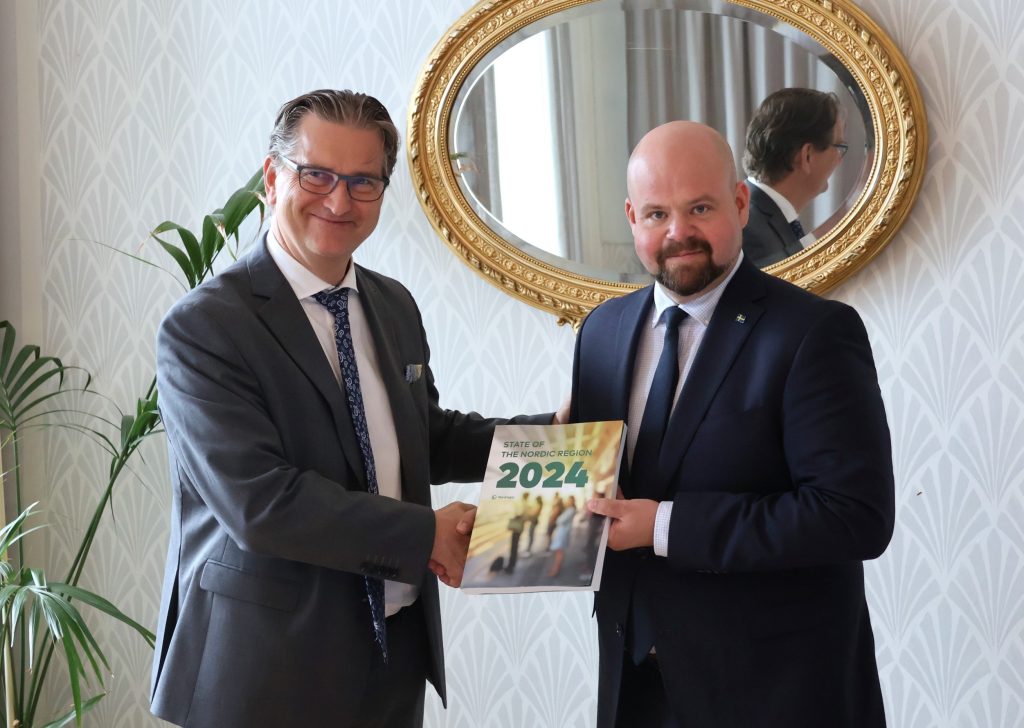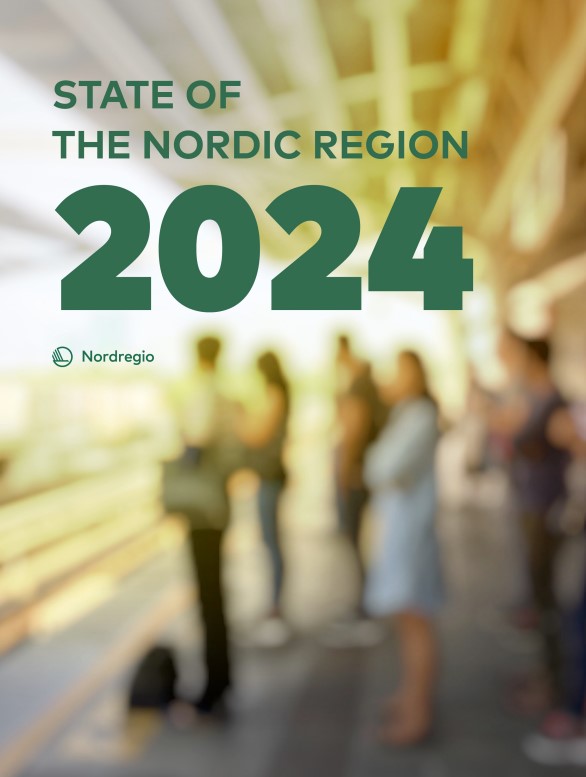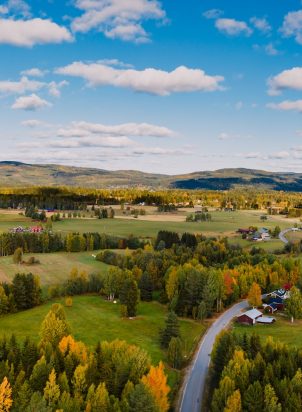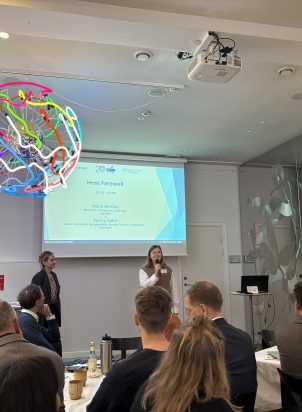Despite signs of resilience and recovery in the economy and labour markets since the pandemic, the Nordic countries are facing challenges from a demographic shift and persistent regional disparities. The latest data in the newly published State of the Nordic Region 2024 report shows that the Nordic model is proven to be resilient in crises, but there are also shadows in the horizon for the future.
State of the Nordic Region 2024 maps out the latest developments in the Nordic countries and compares the progress and status quo across borders and regions with insights into the trends shaping the future of the Nordic Region.
The report covers three key domains: demography, labour market and economy. It compiles a broad set of data and statistics into a consolidated overview illustrated with customised maps. In addition to thematic chapters, the report includes a Regional Potential Index that enables cross-regional comparisons. The newly updated Regional Potential Index ranks Oslo as the top performing region, followed by Stockholm county and the capital regions of Denmark and Iceland.

“State of the Nordic Region is a unique overview of maps and analyses of latest development trends across the Nordic regions, providing insights into navigating the challenging waters of the Nordic societies.”
– Rolf Elmér, Director of Nordregio
Demographic shifts changing the population dynamics
The Nordic Region is undergoing demographic shifts that are reshaping the socioeconomic realities across and within regions. Long-term challenges stem from record-low birth rates and ageing population. The fertility rates in the Nordic Region have fallen below replacement levels. In 2022, the number of deaths exceeded births for the first time. As a result, the Nordic countries are facing a population decline, felt most steeply especially in rural areas. Finland, in particular, stands out with low fertility and increased childlessness, although similar trends are prevalent across the Nordics.
The downward trend is balanced by positive net migration, which is now the main source of population growth. In 2022, the Nordic Region saw a sharp rise in international net migration, with 212,400 new residents, nearly tripling the 2020 figures. The inbound migration is making the Nordics more diverse than ever before. Sweden, for instance, is experiencing steady population growth primarily driven by international migration. However, while foreign-born population is on the rise in municipalities and regions across the region, much of it centres in cities and urban areas.

What else is happening across the Nordic Region? Explore State of the Nordic Region 2024 and see for yourself – the full report is available online.
For more highlights and key take-aways, tune in for the launch webinar on Wednesday 19 June at 13:00 – registration is open.
Resilient labour market challenged by labour shortages and skills mismatches
The Nordic labour markets have shown remarkable resilience, bouncing back quickly after the initial shock from the pandemic. Employment rates have rebounded to pre-pandemic levels across many sectors. However, the labour shortages in key areas such as healthcare, technology, and green industries continue to pose challenges. The report sheds light on the potential of education, targeted training and integration policies to address skill gaps and build capacities for the future and looks at the impact of green transition and megatrends on the labour market across regions and geographies.
Green transition as a growth catalyst
Looking towards the future, green transformation can be a potential source of growth and spark new initiatives across the urban-rural divide. The green economy is expected to generate a substantial increase in employment, particularly in resource-rich rural areas. Already in 2021, 25.2% of total employment in the Nordic Region was classified as green, well above the OECD average of 17.6%. The highest share of green jobs is found in Sweden (26.6%), followed closely by Norway (26.3%), Finland and Denmark (both 23.6%) and Iceland (23%). To keep up and build on the momentum, the acceleration of green transition calls for steady and stable supply of fossil-free energy, as well as availability of the necessary skills and labour.
“Green transition is among the megatrends impacting the labour market. We are already seeing the changes in job creation, skills needs, and labour shortages. However, we should also take the geographical perspective and regional impacts of the transformation into account”.
– Gustaf Norlén, Senior Analyst and Cartographer (Nordregio) and editor of State of the Nordic Region 2024
Uneven growth trajectories across regions
Economic indicators have remained strong despite the challenging global economy shaped by consecutive crises. Between 2021 and 2022, the Nordic economies grew at twice the rate of the EU, showcasing resilience and adaptability. The Nordic GDP has been consistently well above the EU average. Norway stands out in particular with the highest figures.
However, a closer look into local contexts reveals that income disparities within and between regions are on the rise, threatening social cohesion both locally and across the Nordics. Recent figures show that Sweden and Greenland had the highest levels of income inequality. Differences at the municipal level can be found both within and across countries.
Where does your region stand? Take a look!
Demography
- Chapter 1: Population change beyond the pandemic
- Chapter 2: Fertility decline in the Nordic Region
- Chapter 3: The Nordic geography of diversity
Labour market
- Chapter 4: The Nordic labour market after the pandemic
- Chapter 5: Challenges of labour shortages and skills provision
- Chapter 6: Green transition of the labour market
Economy
- Chapter 7: Regional perspective
- Chapter 8: Business perspective
- Chapter 9: Household perspective
Regional Potential Index
- Chapter 10: RPI: Revised methodology






